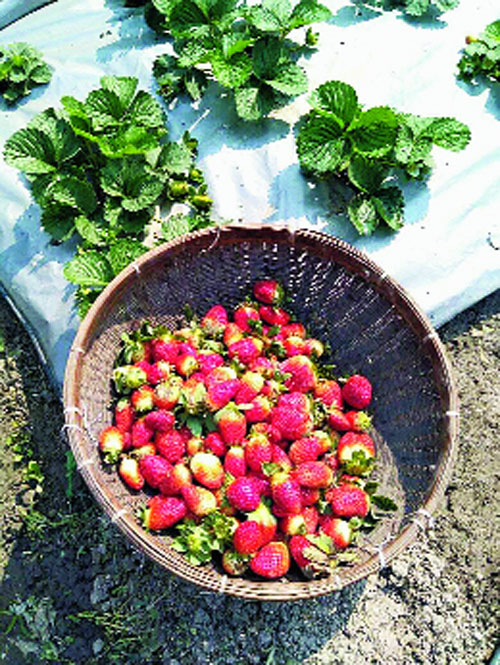Farming is rapidly becoming a passion for people in Assam. Educated youths are cultivating strawberries, oranges, tea and aromatic joha rice.
Nandita Barua, a post-graduate and a native of Amiyapur Nand Gaon in Nalbari district, is cultivating strawberry on a four-bigha plot and earning well.
Some farmers in Tinsukia district of Upper Assam have adopted zero-budget natural farming (ZBNF), which is a method of chemical-free agriculture.
Seema Moran, a farmer from Kakopathar village, has adopted ZBNF and comes to the weekly market at Doomdooma on Tuesday, at Rupai Siding on Friday and in Tinsukia town on Sunday to sell vegetables which she grows on her two bighas of land.
“The vegetables are quickly sold in these markets. I come around 10am and manage to sell the entire produce by afternoon. People are showing keen interest in my produce as it is free of chemical fertilizer or pesticides. Several organisations have provided us banners, posters and locations to attract customers at stalls at other regular stalls too across the district,” Moran said.
Mohan Bora, another farmer from Sadia subdivision of the district, said he started to sell his produce about five weeks ago.
“We are selling our produce at the market price and earning well as our input cost is almost zero.”
Under ZBNF, fertilizers are not used by farmers during cultivation of paddy, vegetables and many other agricultural products. These farmers have traditional methods to keep away insects from crops and to make the land fertile. Besides, the climate of the state is also most suitable for farming.
Farm experts said the results of ZBNF have been more encouraging in vegetable crops.
Reports said scientists have been able to produce 105 quintals of radish per hectare against 80 quintals produced under organic farming — a 31 per cent increase, which is very encouraging.
Increase in the production of broccoli, cauliflower, cabbage and pea has also been registered with the help of this technique.
A farmer from Maharashtra, Subhash Palekar, had developed the technique in mid-1990s as an alternative to the Green Revolution methods that were driven by chemical fertilizers and pesticides and intensive irrigation.
He argued that the rising cost of external inputs was a leading cause of indebtedness and suicide among farmers, while the impacts of chemicals on environment and the long-term fertility of soil was devastating. Without the need to spend money on these inputs or take loan to buy them, the cost of production could be reduced and farming made a “zero-budget” exercise.
However, many modern agriculture experts have resisted the technique. They say it cannot cater to the food security needs of the country in view of increasing population.










